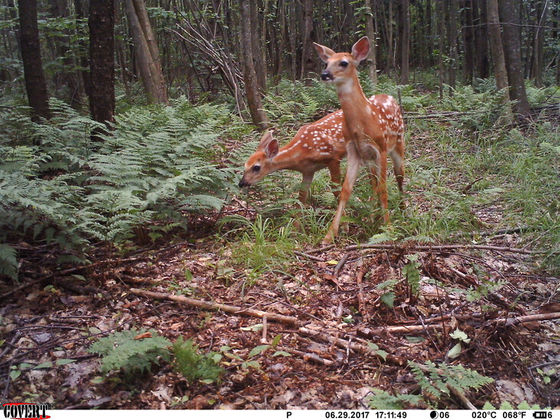Research results show that the presence of humans has disrupted the 'alertness' of wild deer

by
Wild deer are vigilant and will flee as soon as they detect the dangers around them. However, a survey result was announced that 'deer that live in forests where humans frequently enter are so low in alert that they appear to be almost unsuspecting.' Researchers say, 'I'm tired of being constantly alert to humans, and I'm in a state of burnout.'
Threading the needle: How humans influence predator–prey spatiotemporal interactions in a multiple−predator system --Murphy ---- Journal of Animal Ecology --Wiley Online Library
https://besjournals.onlinelibrary.wiley.com/doi/epdf/10.1111/1365-2656.13548
When fawns perceive constant danger from many sources, they almost seem to relax | Penn State University
https://news.psu.edu/story/663796/2021/07/14/research/when-fawns-perceive-constant-danger-many-sources-they-almost-seem
The Constant Threat of Humans Is Turning Fawns Into Heedless Burnouts
https://www.sciencealert.com/humans-are-causing-fawns-so-much-stress-researchers-say-they-look-burned-out
A new study on deer alertness was published by Asia Murphy of Pennsylvania State University. Murphy installed fixed-point cameras in three public forests in central Pennsylvania to see how human presence affects black bears, coyotes, bobcats, and white-tailed deer. We monitored animal behavior in three areas, 'forests,' 'agricultural land,' and 'near low-density residential areas,' where human influence is thought to be different.
The fixed-point camera survey was conducted from mid-to-late May, when the baby Zika was just born, to September, just before the hunting season. The cameras themselves are randomly installed in 18 units at a distance of at least half a mile (about 0.8 km) in each of the three locations of 'forest', 'agricultural land', and 'near low-density residential area', and motion sensors detect animals. When I did, it was set to take three pictures in a row. In addition, an attractant mixed with animal urine and food was sprayed at each shooting point.

A close examination of more than 10,000 photographs taken in this way revealed that the behavior of predators such as Asiatic black bears and white-tailed deer is remarkable in farmlands and residential areas where humans frequently appear and in forests where humans rarely appear. I found it different. Of particular note is the change in 'Ojilogica's vigilance', which is constantly vigilant in 'forests' where the probability of encountering predators is low, while 'farmland' and 'low' where the probability of encountering predators is high. It was confirmed that in 'near densely populated residential areas', the predators show vigilance only during the most active hours, but not during the rest of the time.
It is generally believed that more than half of white-tailed deer die within the first year of life, and most of the causes are said to be predation. According to Murphy, newborn fawns instinctively understand that they are in constant danger. However, this study found that alertness was weakened in environments with human influence. Regarding the reason for this phenomenon, Murphy said, 'If the presence of humans constantly increases the risk of the living environment, animals will basically not be alert. What surprised me when I studied it was. It means that many of the baby deer who recognize that a strong danger is imminent will be in a state of being just relaxed, as if it is meaningless to hide or escape. It was the same with old deer. ' He said that this phenomenon is caused by the constant stress caused by the existence of human beings, which makes it look like burnout.

Previous studies have suggested that predators may benefit from human intervention, but no evidence has been obtained. According to this survey, the predation rate of deer was high in areas where humans are infested, and Professor Duane Diffenbach, who was the instructor of Mr. Murphy, said, 'This study is a land disturbed by humans. It is important in that it is the first to prove that it affects the interaction between predators and predators. '
Related Posts:







